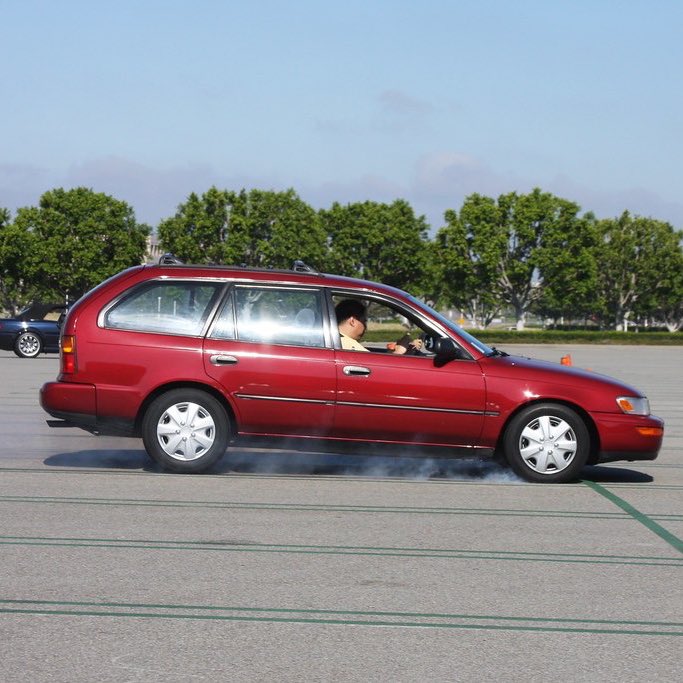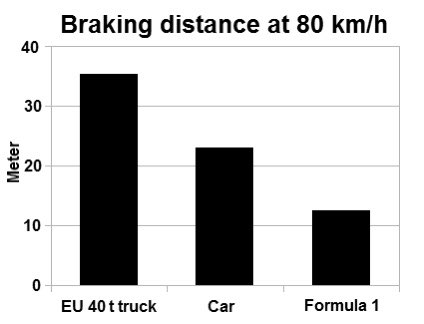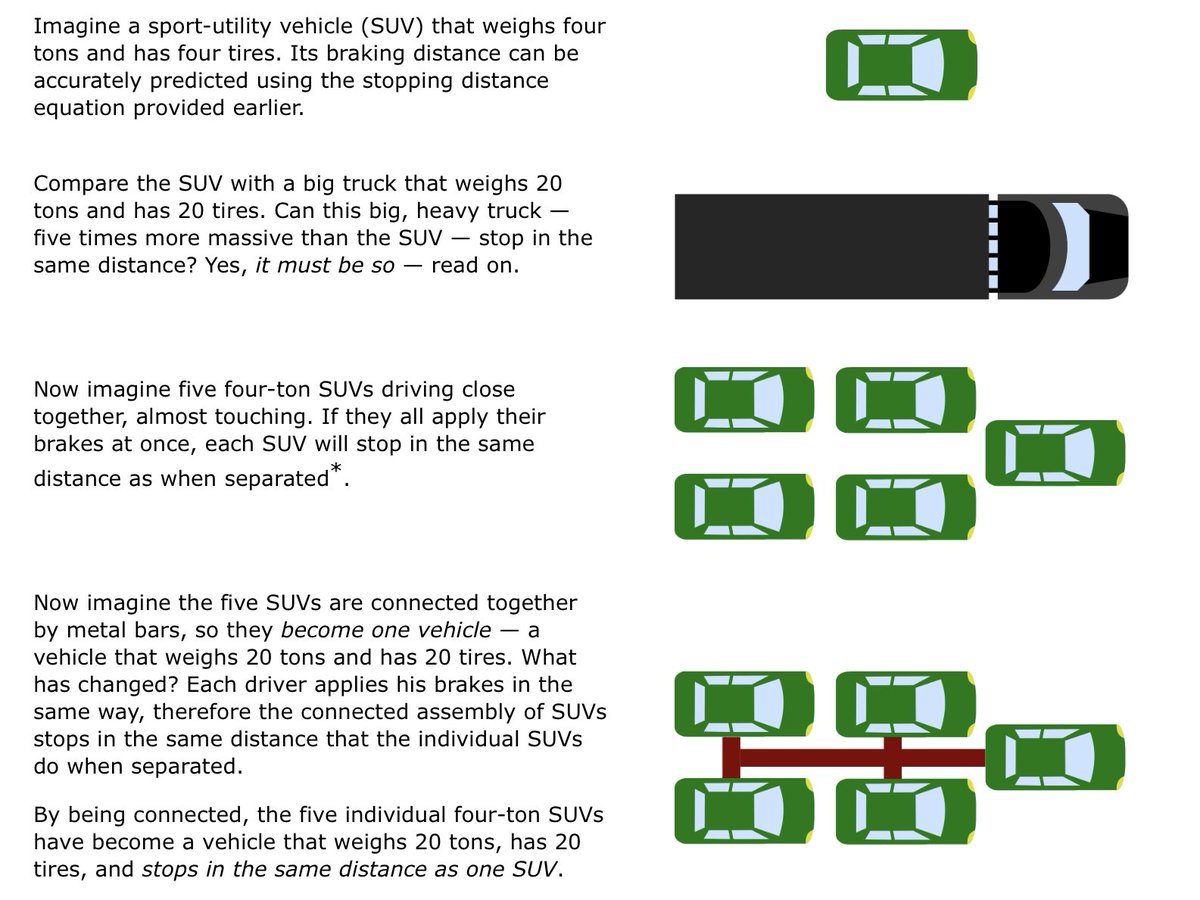Does braking distance depend on the mass of the car?
A boy in my lesson yesterday pointed out that, if the mass of the car gets bigger, the tyres push down more on the road, so the frictional stopping force will be bigger
I couldn’t think of a good #physics reason he’s wrong…
A boy in my lesson yesterday pointed out that, if the mass of the car gets bigger, the tyres push down more on the road, so the frictional stopping force will be bigger
I couldn’t think of a good #physics reason he’s wrong…
The exam board says “students should describe factors affecting vehicle stopping distance, including…mass”
BUT
The amount of kinetic energy the brakes need to get rid of is proportional to the mass (KE= ½mv²)
The frictional force is proportional to the mass too (F=μR=μmg)
BUT
The amount of kinetic energy the brakes need to get rid of is proportional to the mass (KE= ½mv²)
The frictional force is proportional to the mass too (F=μR=μmg)
Here is is on the BBC Bitesize revision website:
“The braking distance of a vehicle can be increased by more mass in the vehicle (extra passengers for example) - the braking friction has to work for a greater distance to remove the larger kinetic energy”
https://www.bbc.co.uk/bitesize/guides/zxh2qhv/revision/1">https://www.bbc.co.uk/bitesize/...
“The braking distance of a vehicle can be increased by more mass in the vehicle (extra passengers for example) - the braking friction has to work for a greater distance to remove the larger kinetic energy”
https://www.bbc.co.uk/bitesize/guides/zxh2qhv/revision/1">https://www.bbc.co.uk/bitesize/...
But
- the Highway Code braking distance chart doesn’t mention mass
- Wikipedia article supports the ‘work done’ line of reasoning, leading to braking distance d being independent of mass (d=v²/2μg)
Have I been teaching a misconception for years?
https://en.m.wikipedia.org/wiki/Braking_distance">https://en.m.wikipedia.org/wiki/Brak...
- the Highway Code braking distance chart doesn’t mention mass
- Wikipedia article supports the ‘work done’ line of reasoning, leading to braking distance d being independent of mass (d=v²/2μg)
Have I been teaching a misconception for years?
https://en.m.wikipedia.org/wiki/Braking_distance">https://en.m.wikipedia.org/wiki/Brak...
I like this argument for trucks. They needn’t have a longer stopping distance than cars (if their brakes are engineered well enough)
“vehicle mass” is listed in “common misconceptions” https://abs.twimg.com/emoji/v2/... draggable="false" alt="👀" title="Augen" aria-label="Emoji: Augen">
https://abs.twimg.com/emoji/v2/... draggable="false" alt="👀" title="Augen" aria-label="Emoji: Augen">
Also supports @Turingalila’s idea that it’s a limit thing
https://arachnoid.com/braking_physics/">https://arachnoid.com/braking_p...
“vehicle mass” is listed in “common misconceptions”
Also supports @Turingalila’s idea that it’s a limit thing
https://arachnoid.com/braking_physics/">https://arachnoid.com/braking_p...
I’m looking to @BBC_TopGear or @MythBusters to sort this out for me!
Does ABS make a difference? What about if the wheels are fully locked? (That’s slip-stick friction, hence the “squeal” of the braking and the rubber on the road - isn’t slipping classic F= μR territory?)
Does ABS make a difference? What about if the wheels are fully locked? (That’s slip-stick friction, hence the “squeal” of the braking and the rubber on the road - isn’t slipping classic F= μR territory?)

 Read on Twitter
Read on Twitter


 Also supports @Turingalila’s idea that it’s a limit thing https://arachnoid.com/braking_p..." title="I like this argument for trucks. They needn’t have a longer stopping distance than cars (if their brakes are engineered well enough)“vehicle mass” is listed in “common misconceptions” https://abs.twimg.com/emoji/v2/... draggable="false" alt="👀" title="Augen" aria-label="Emoji: Augen">Also supports @Turingalila’s idea that it’s a limit thing https://arachnoid.com/braking_p..." class="img-responsive" style="max-width:100%;"/>
Also supports @Turingalila’s idea that it’s a limit thing https://arachnoid.com/braking_p..." title="I like this argument for trucks. They needn’t have a longer stopping distance than cars (if their brakes are engineered well enough)“vehicle mass” is listed in “common misconceptions” https://abs.twimg.com/emoji/v2/... draggable="false" alt="👀" title="Augen" aria-label="Emoji: Augen">Also supports @Turingalila’s idea that it’s a limit thing https://arachnoid.com/braking_p..." class="img-responsive" style="max-width:100%;"/>



